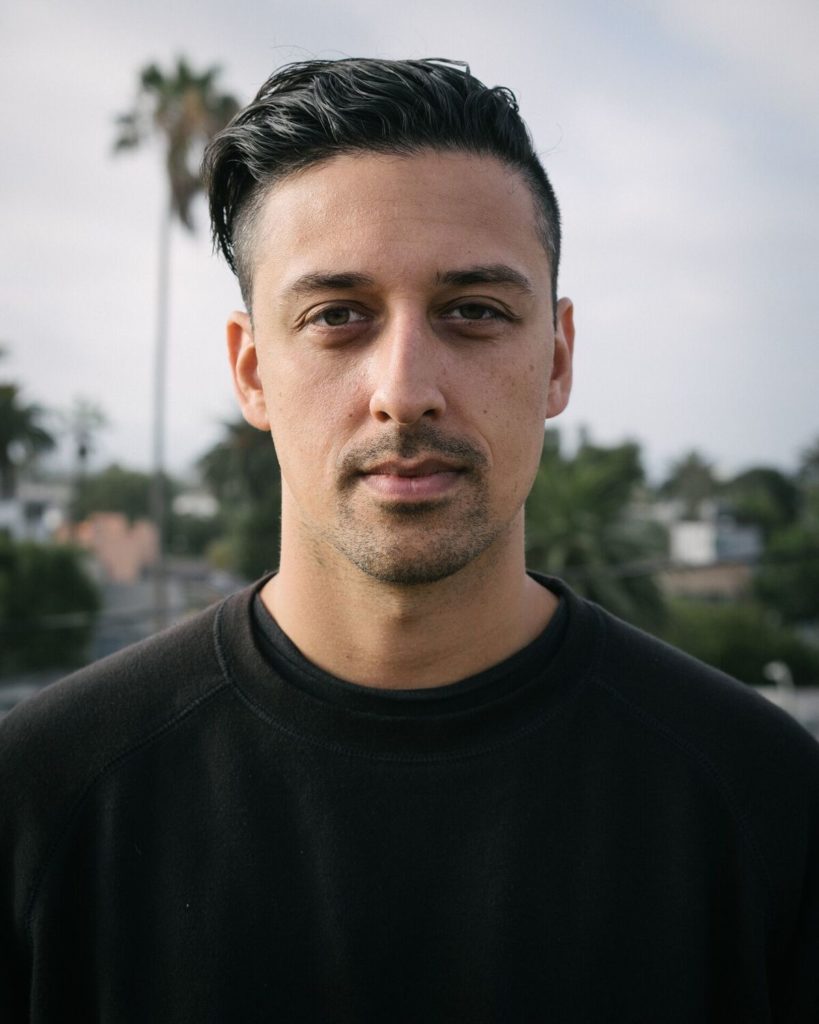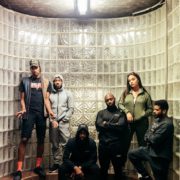The Producer’s Voice: Stint [@stint_]
![The Producer’s Voice: Stint [@stint_]](https://guap.co/wp-content/uploads/2021/11/5_22-180x180.jpeg)
Words By Miki Hellerbach
The Producer’s Voice is a new series for GUAP where we highlight the stories of instrumental crafters. We hope to bring their stories to the forefront instead of kept behind the artist they are producing for.
Taking a bit of a less conventional route as a producer, Stint’s understanding of the production process is what has allowed him to have so much success across a variety of genres.
Victoria B.C.’s own Stint should have a plethora of pieces dissecting all his work, as he has helped craft full albums worth of songs for top tier artists over the last five or six years. He started musically experimenting with his core group of friends in his youth as they all gathered together instruments to create bands. Stint’s mother also taught piano and his older brother played drums. This pushed him towards percussion as well and at the end of high school, he started playing and touring across Canada.
After touring for a few years and not breaking through like he wanted, Stint decided to go off on his own as a producer. He took a unique next step by enrolling in a sound design program at Vancouver Film School. It was a one year fully intensive program which included many 12 hour days. Though his studying wasn’t music focused he did learn how to use a lot of the things he would have to have mastered for his future music production like using Pro Tools and Ableton, understanding how synthesis works, crafting with signal flow, and mixing.
Upon graduating Stint fell right back into music initially doing soundtrack stuff for indie films then eventually making consistent trips to LA to work with artists on production and songwriting. He says, “What I was lacking in musicianship I made up for in sound design. I would be working in r&b sessions where I’d have no idea what was going on chord wise and fumbling through but was bringing in elements from ambient stuff I knew.” This was the key that propelled Stint into what has become a fruitful career.
Upon getting into sessions with writer Rick Nowels through working with the artist Jagwar Twin (formerly Roy English) Stint found himself assisting on things for Lana Del Rey and Adele. Most of this never saw the light of day but it got him in the game. Stint has since helped craft songs in a variety of genres for a variety of projects. He has contributed to countless arrangements for artists from Demi Lovato and Kesha in the pop lane, to Gallant and Nao in the r&b/neo-soul lane, MØ and Dillon Francis in the electronic lane, and in the more alternative lane Portugal The Man and Santigold. When I asked Stint about what stuff he’s most proud of right now though he referenced this really cool album Vol. 4: Slaves of Fear by LA alternative noise band HEALTH. His range knows no bounds.
“I’m from Canada and have been producing down here (LA) since 2013 and have been on visas this whole time. You have to renew them every three years and they have certain restrictions. More importantly, my wife isn’t able to work because she’s on my visas as a dependent, but if we had a green card spouses are able to work. A green card has been one of our bucket list goals this whole time but one of the prerequisites is press. For visas it can be articles about projects you’ve worked on, but for a green card it has to be an article about me with my picture that mentions my name. Every little bit helps.”
Stint for GUAP (2021)

I asked Stint to give the backstory of three of his top instrumentals. Take a read.
“Percogesic” by Gallant
“I remember the drum break being really important for that. It reminded me of the Issac Hayes classic vibe with the heavy congas. That was really important to me. At the time, I was using Addictive Keys for my Rhodes (piano). Before Keyscape even came out that was my favourite Rhodes sound. The sparkly stuff I forget where that came from. I remember we recorded in Pulse Studios on a dark moody kind of night.
I think we did something cool on the bridge. Oh yeah, I sampled something in the bridge that no one ever caught me for. We can admit it now cuz no one’s ever gonna come for a five year old album track. The “mms” are sampled from my favourite anime ever, which is Cowboy Bebop. I had every piece of audio from that show cuz I’m obsessed with it and I think it’s someone humming something in one of the episodes. The lead female I think, Faye, it might be her humming something as a part of dialogue. I put octaves on it and a bunch of verb.
The drum and bass was all Gallant’s idea. I think a lot of early Gallant stuff came from a lot of my ignorance and his proficiency. He’s a big r&b head and I know absolutely nothing about it. I did have a TLC and a Mariah Carey record growing up. Other than that I had no other education and didn’t really get into early r&b until much later in life. So there really weren’t any rules or things I thought I had to stick by. I came from listening to and making electronic music on a computer, so I used all these drum grooves that sounded cool to me at the time. I was a fish out of water floundering and cool stuff happened.”
“Glad That You’re Gone” by Nao
“That one had a lot to do with Dayyon Alexander who was the writer and is across the whole album. When we wrote it I was actually doing more of a bouncy and more playful production. It had a laid back neo soul bounce with more electronic drums. But Dayyon’s idea was to make it a lot more live, and classic soul Motown. So we brought in this amazing guitarist who ripped it and he did a little bass. Then I filled in the gaps on bass and redid the drum groove completely with a way more organic sounding palette. Because it worked so well as that classic 4 piece setup, it made us go even harder on the vocals. Nao absolutely destroyed it.
For her, it was the biggest vocal session I’ve ever worked on. Possibly even in my career. I’m talking upwards of like 100 vocal tracks. Layers upon layers of background parts and groups coming in for a second with like 20 stacks then being gone. Very D’Angelo approach, like not over-tuning them but still making them all gel.
The outro is one of my favourite parts too which was finding a string sample and building around that. I think it was a splice sample which isn’t really that sexy, but the lead line I think came from that. I filtered it a bit so it was just picking up the lead line then replayed it and doubled it with other things to make it feel more personalized. Again, it was me not really knowing what I’m doing but just thinking this feels like the right next chord to go to for an outro that sounds like a soul song. Just faking it til I fuckin make it. But I loved that era with D’Angelo, Questlove, Lauryn Hill, and Erykah Badu in the late 90s, it was fucking magic. I tried to pay some respect to that.”
“Modus” by Joji
“I don’t work on a lot of hip hop stuff but [in terms of] my understanding of how a lot of hip hop stuff works, he’s one of the closest I’ve worked with to that workflow. It’s in the hip hop method in that he just makes beats, does his thing on them, and then that’s that. You don’t get a lot of over-obsessive back and forth or reworking elements. So he just came by a while ago and we made three beats and hung out. We didn’t even touch vocals. He produced some of his early stuff on his own so he knows what he’s doing. That was one beat from that little session and I think he was just really stoked on the strings.
For artists I always want to play into their strengths, not holding back necessarily, but I was like, “I wanna make a cool laid back vibey “Yeah Right” styled track,” and he was gravitating more towards anything I did that sounded more cinematic. I think maybe he knew other stuff I’d done that leaned that way. So we started layering with the Mellotron and building this giant string section. I was like, “More?” and he was like, “Yeah, it sounds amazing!” Then I was like, “You sure this isn’t too extra and sounds like a Lana Del Rey song?” and he was like, “No, it sounds amazing!” We built it up til it sounded like this whole sampled thing and put some more modern drums on it to kind of anchor it in his world. During covid I got a text that was just like, “hey check this out” and it was just the whole song on it. He recorded and mixed it all himself. We did a few other demos over covid and one came out that’s called “Gates To The Sun” with Sahbabii. He’s an enigma.”




![ZINO VINCI’S ‘FILTHY & DISGUSTING’EP BRINGS YOU TO THE CORE OF THE ARTIST [@ZinoVinci]](https://guap.co/wp-content/uploads/2023/10/Zino-4.jpg)




